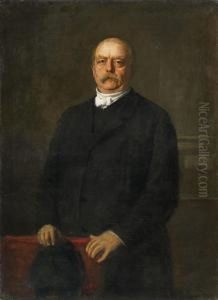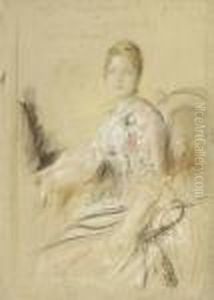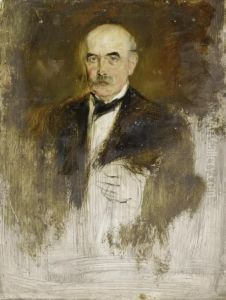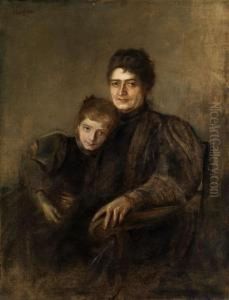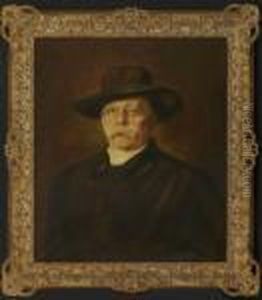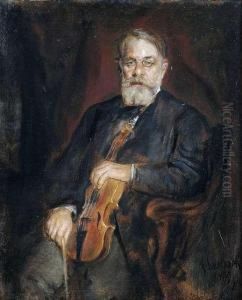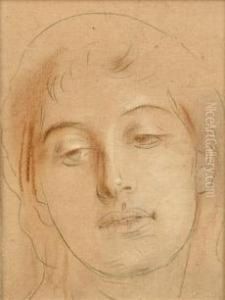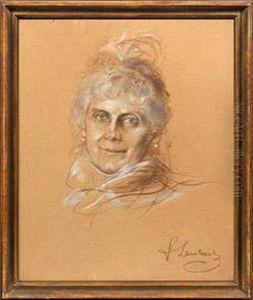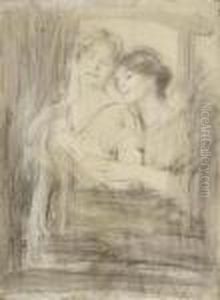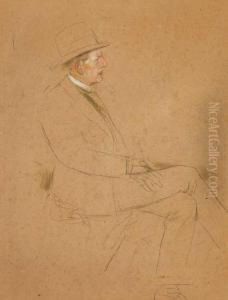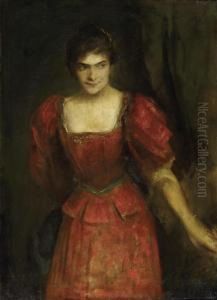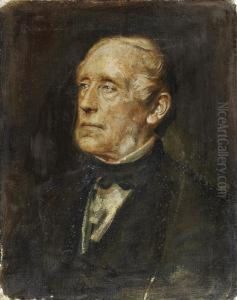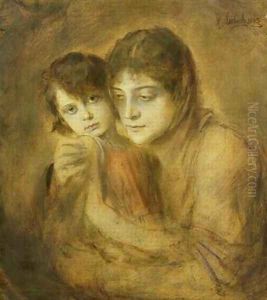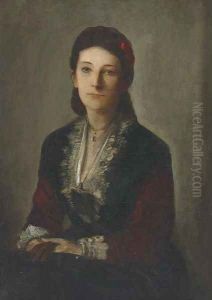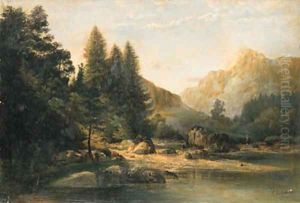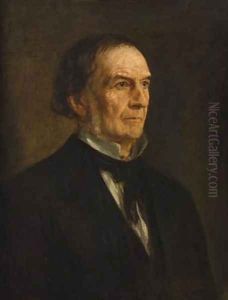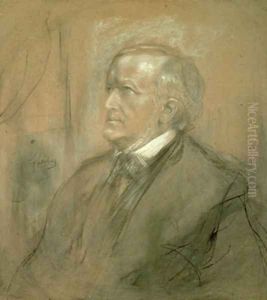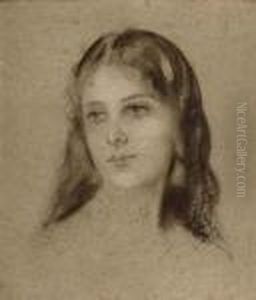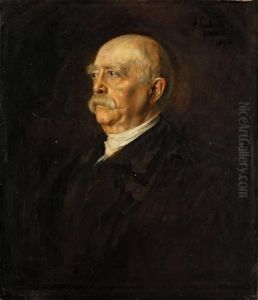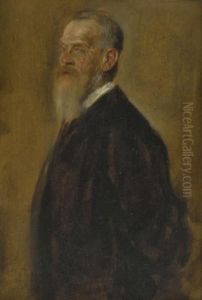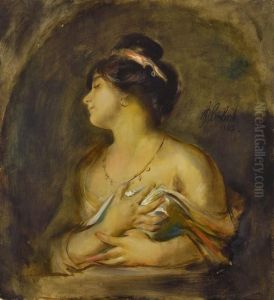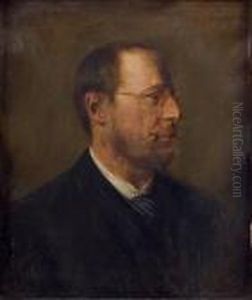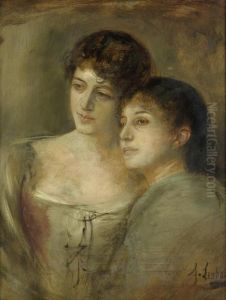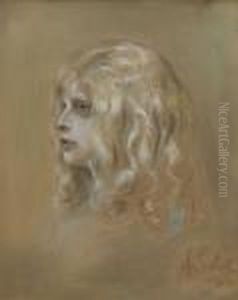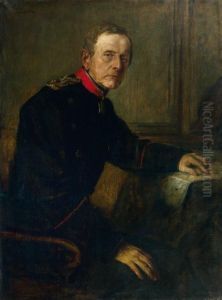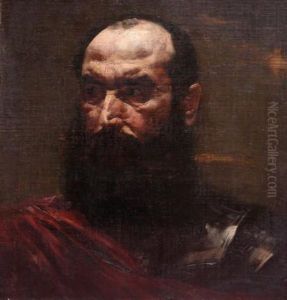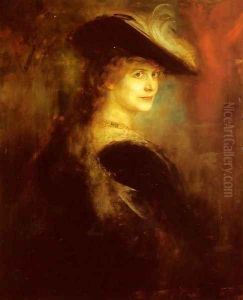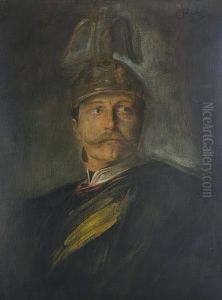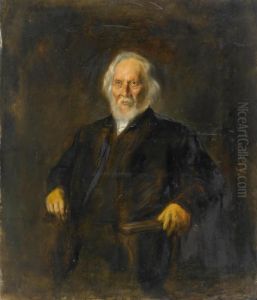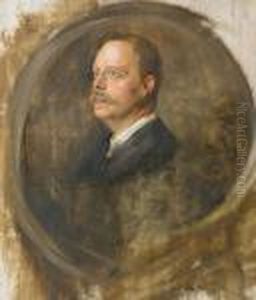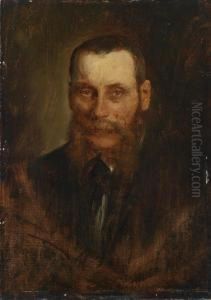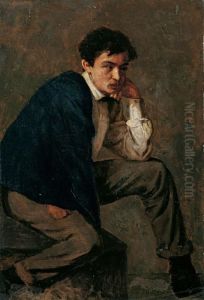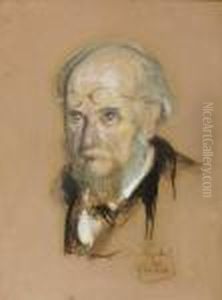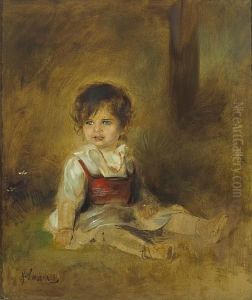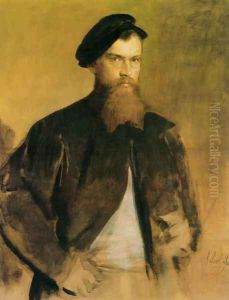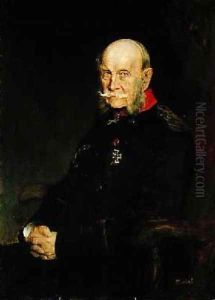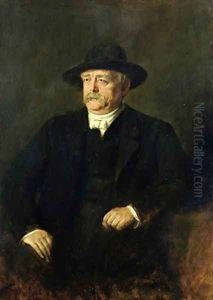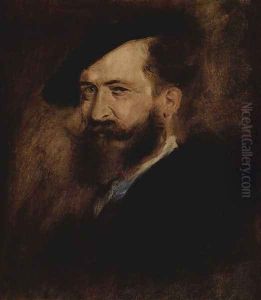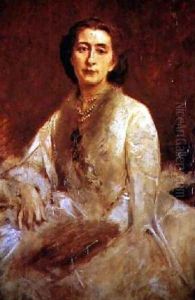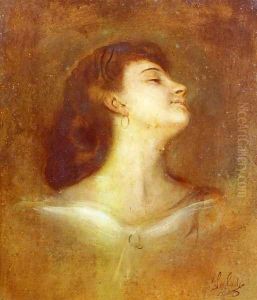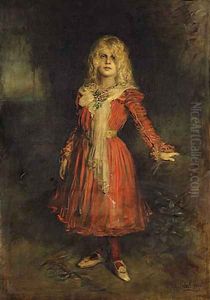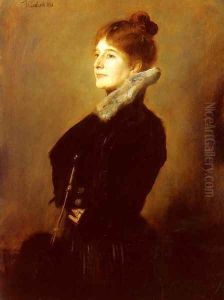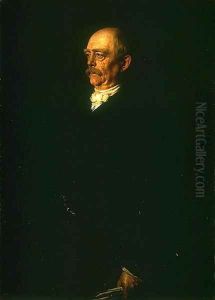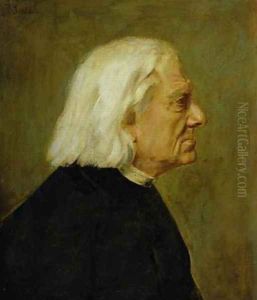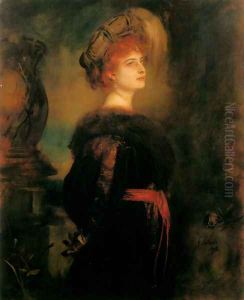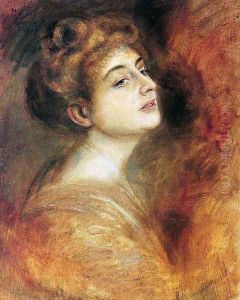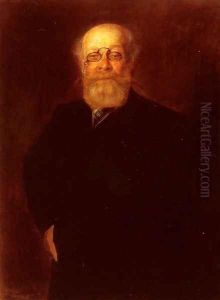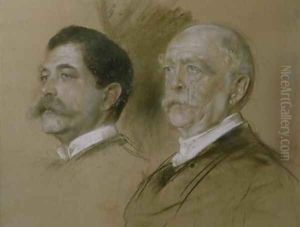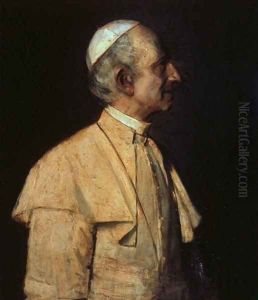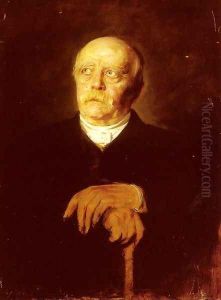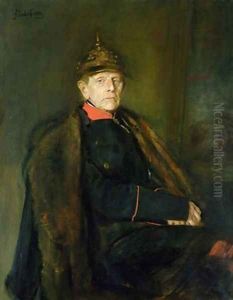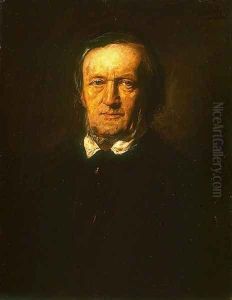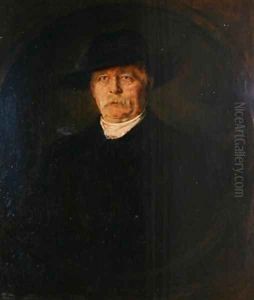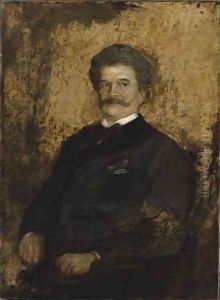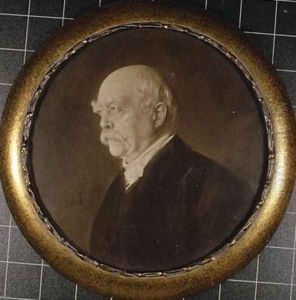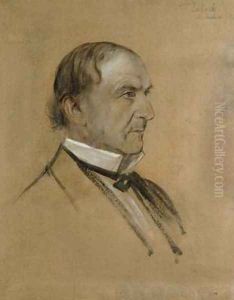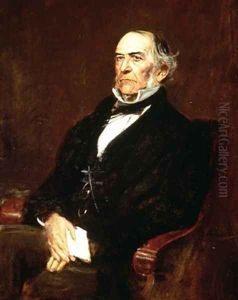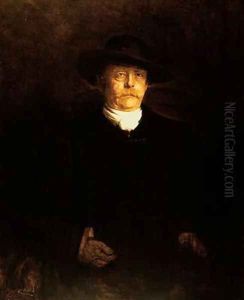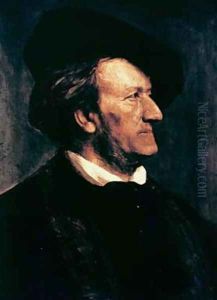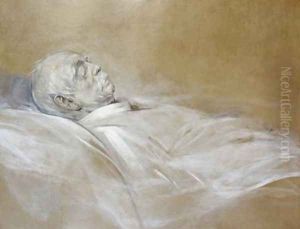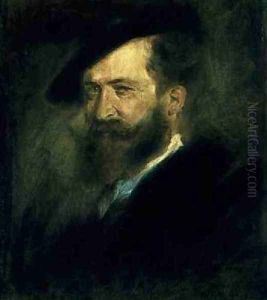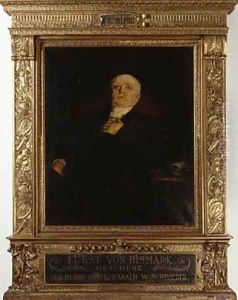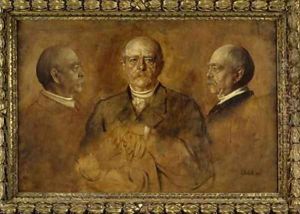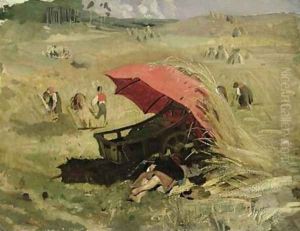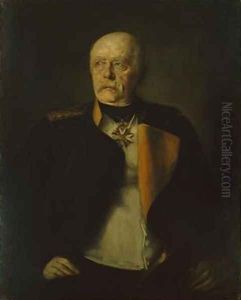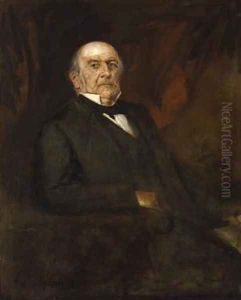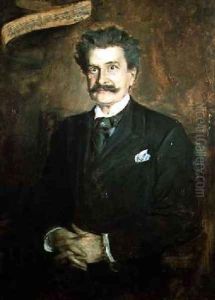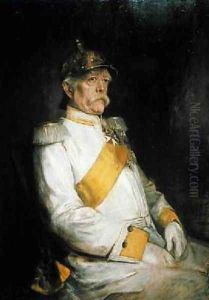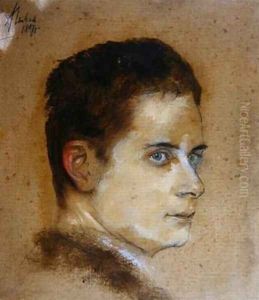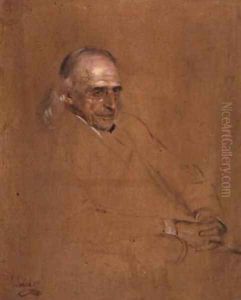Franz von Lenbach Paintings
Franz von Lenbach was a renowned German painter, known for his portraits of prominent figures of his time, which include industrialists, scientists, and heads of state. Born Franz Seraph Lenbach on December 13, 1836, in Schrobenhausen, Bavaria, he was the third son in his family. His talent for painting was evident from an early age, and he initially studied at the Academy of Fine Arts in Munich.
Lenbach's early works were influenced by the styles of the Old Masters, and he became particularly adept at mimicking their techniques. This skill won him accolades and allowed him to develop a strong foundation for his later works. After his studies, he traveled extensively throughout Italy, where he was deeply influenced by the Renaissance art that he encountered. This experience further shaped his style and artistic approach.
In his mid-twenties, Lenbach moved to Rome, which was a center for artists at the time. There, he became a part of the German artist colony and continued to refine his skills. His reputation grew, and in the 1860s, he started receiving commissions from various aristocratic and high society patrons. His ability to capture the character and essence of his subjects in his portraits made him a favorite among the elite.
After his stay in Italy, Lenbach returned to Munich and established a successful portrait studio. He portrayed many famous personalities, including Otto von Bismarck, Pope Leo XIII, and Richard Wagner. Lenbach's style was characterized by a realistic representation with a particular focus on the play of light and shadow, as well as a rich color palette.
In 1882, he was ennobled by King Ludwig II of Bavaria, after which he added 'von' to his name, becoming Franz von Lenbach. His home in Munich, the Lenbachhaus, was designed by him and later became a gallery and museum housing many of his works as well as pieces by other artists.
Lenbach's influence extended beyond his paintings. He was a key figure in Munich's cultural life and was involved in various artistic circles. His legacy includes not only his extensive body of work but also his contribution to elevating the status of portrait painting in the late 19th century.
Franz von Lenbach died on May 6, 1904, in Munich. He left behind a significant impact on German art, particularly in portraiture. Today, his works are held in numerous collections and museums around the world, and he is remembered as one of the foremost portrait painters of his era.
